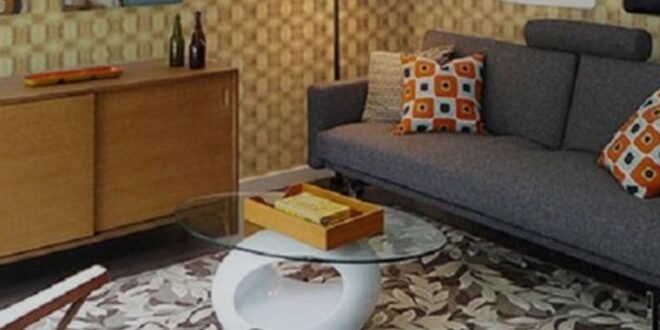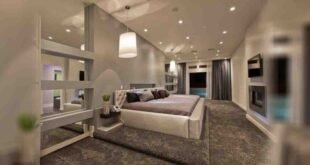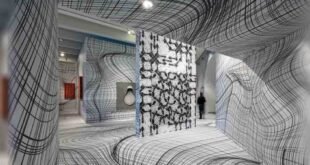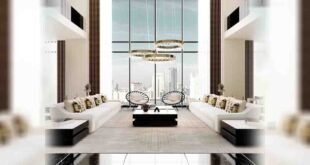Introduction to Retro Design Trends:
In the ever-evolving world of interior design, a noticeable trend has emerged — the revival of retro aesthetics. This movement involves drawing inspiration from design elements of the past, creating spaces that seamlessly blend nostalgia with contemporary flair. The purpose of this resurgence extends beyond mere aesthetics; it taps into the emotional connection individuals have with specific eras and styles, evoking a sense of comfort and familiarity.
The Allure of Nostalgia:
At the core of the retro revival is the powerful allure of nostalgia. People are instinctively drawn to the familiar, and in the realm of interior design, this translates into a desire to surround oneself with elements reminiscent of the past. Whether it’s the comforting hues of a bygone era or the charm of vintage patterns, the emotional resonance of nostalgic design elements creates a unique connection between the past and the present.
Popular Retro Eras:
To understand the diversity within retro design, it’s essential to explore specific eras that have become influential in contemporary interior spaces. The 1950s, 1960s, and 1970s stand out as particularly popular choices. Each era brings its own set of characteristics — the 1950s with its clean lines and optimism, the 1960s with its bold experimentation, and the 1970s with its eclectic mix of earthy tones and vibrant patterns. Recognizing these distinctive features allows for a nuanced approach to incorporating retro elements.
Mid-Century Modern Resurgence:
One of the most enduring subsets of retro design is the resurgence of mid-century modern aesthetics. Originating in the mid-20th century, this style emphasizes functionality, simplicity, and a connection with nature. Today, mid-century modern design remains a staple in interior decor, with its clean lines and minimalist approach providing a timeless appeal. Understanding the enduring popularity of this era helps explain why it continues to influence contemporary design choices.
Colors and Patterns:
A key aspect of retro design lies in its bold and vibrant use of colors and patterns. From the subdued pastels of the 1950s to the psychedelic patterns of the 1970s, retro design offers a wide spectrum of possibilities. Exploring the revival of these colors and patterns in modern interiors sheds light on the willingness of individuals to embrace the unconventional and inject energy into their living spaces.
Furniture and Decor Elements:
Iconic furniture pieces from retro eras have become focal points in the revival of nostalgic design. Whether it’s the Eames Lounge Chair from the mid-century period or the shag carpets synonymous with the 1970s, incorporating these elements can transform a space and evoke a specific era’s atmosphere. By understanding the significance of these pieces, individuals can curate their spaces with authenticity and intention.
Mixing Old and New:
A crucial aspect of successful retro design lies in the art of blending old and new seamlessly. Striking the right balance ensures that a space feels both nostalgic and current. This approach allows for the integration of cherished vintage finds with modern elements, creating a harmonious and eclectic aesthetic. Tips on achieving this balance empower individuals to experiment with their design choices while maintaining a cohesive overall look.
DIY Retro:
As the retro revival gains momentum, do-it-yourself (DIY) projects have become a popular avenue for individuals to personalize their spaces. Whether it’s refurbishing vintage furniture or creating retro-inspired decor from scratch, the DIY ethos adds a layer of authenticity to the nostalgic design trend. Exploring examples of such projects provides inspiration for those looking to infuse their spaces with a personal touch.
Sustainability and Upcycling:
Beyond the aesthetic appeal, the revival of retro design aligns with the growing emphasis on sustainability. Choosing vintage and second-hand items not only adds character to a space but also reduces the environmental impact of mass production. The concept of upcycling, repurposing old furniture to give it new life, resonates with both the retro aesthetic and the broader commitment to sustainable living.
Personalizing Retro Design:
While the retro revival offers a collective journey into the past, it also encourages individuals to infuse their unique personality into the design process. Personal touches, whether through cherished heirlooms or DIY creations, contribute to a space’s narrative. Embracing the idea of personalization ensures that the nostalgic elements chosen resonate with the individual’s own memories and experiences.
Challenges of Retro Design:
While the allure of retro design is undeniable, integrating these elements into a contemporary space comes with its challenges. Striking a balance between retro and modern without creating a dated look requires careful consideration. Addressing potential challenges, such as the risk of overdoing vintage elements, allows individuals to navigate the retro revival with confidence and style.

What defines retro design in interior decor?
Retro design in interior decor refers to the incorporation of design elements from past eras into contemporary spaces. It often involves drawing inspiration from specific time periods, such as the 1950s, 1960s, or 1970s, and infusing nostalgic elements to create a unique and visually appealing aesthetic.
Why is there a resurgence of interest in retro interior design trends?
The resurgence of interest in retro design can be attributed to the emotional connection people have with the past. Nostalgia plays a significant role, offering a sense of comfort and familiarity. Additionally, the timeless appeal of certain retro styles, such as mid-century modern, contributes to their enduring popularity.
Which retro eras are currently influencing interior design the most?
While various retro eras influence interior design, the 1950s, 1960s, and 1970s stand out prominently. Each era brings distinct characteristics — the optimism and clean lines of the 1950s, the bold experimentation of the 1960s, and the eclectic mix of earthy tones and patterns of the 1970s.
What is mid-century modern design, and why is it experiencing a resurgence?
Mid-century modern design originated in the mid-20th century, emphasizing functionality, simplicity, and a connection with nature. Its enduring popularity can be attributed to its clean lines, minimalist approach, and timelessness. Many appreciate its ability to seamlessly integrate into contemporary spaces.
How can I incorporate retro colors and patterns into my home without overwhelming the space?
To incorporate retro colors and patterns without overwhelming the space, start with small accents such as throw pillows, rugs, or wall art. Gradually introduce bolder elements while keeping the overall color palette balanced. This ensures a harmonious blend of retro and modern without creating visual chaos.
What are some iconic furniture pieces from retro eras that I can use in my interior design?
Iconic furniture pieces from retro eras include the Eames Lounge Chair (mid-century modern), Tulip Chairs (1960s), and bean bag chairs (1970s). These pieces can be focal points in a room, adding authenticity and a touch of nostalgia to your interior design.
How can I mix old and new elements in my home to achieve a balanced retro look?
Achieving a balanced retro look involves blending old and new elements thoughtfully. Integrate vintage furniture with modern decor, ensuring there’s a cohesive color scheme. Experiment with layering and textures to create visual interest while maintaining an overall sense of harmony.
Are there any sustainable aspects to the retro design trend?
Yes, the retro design trend aligns with sustainability by promoting the use of vintage and second-hand items. Choosing pre-loved furniture and engaging in upcycling projects not only adds character to a space but also reduces the environmental impact of new production, contributing to a more sustainable lifestyle.
How can I personalize my retro-inspired space?
Personalizing a retro-inspired space involves incorporating elements that hold sentimental value. Use family heirlooms, create DIY projects, or showcase items that reflect your personal tastes and memories. Adding these personal touches ensures your space is not just nostalgic but also uniquely yours.
What challenges might I face when integrating retro design into my home?
Challenges in integrating retro design include avoiding an overly dated look and striking the right balance between vintage and modern elements. Careful consideration of color choices, furniture placement, and the overall design scheme can help overcome these challenges.
Can I mix different retro eras in my interior design, or should I stick to a specific time period?
Mixing different retro eras is entirely possible and can result in a unique and eclectic design. However, it’s essential to maintain a cohesive theme to prevent the space from feeling disjointed. Consider selecting a dominant era as a base and introducing elements from other periods strategically.
Is it necessary to hire a professional designer to achieve a successful retro-inspired interior?
While hiring a professional designer can certainly provide expertise and guidance, achieving a successful retro-inspired interior is not strictly dependent on professional help. With research, inspiration, and a clear vision, individuals can undertake the design process themselves, tailoring their space to their personal preferences and style.
 Nt Design
Nt Design



